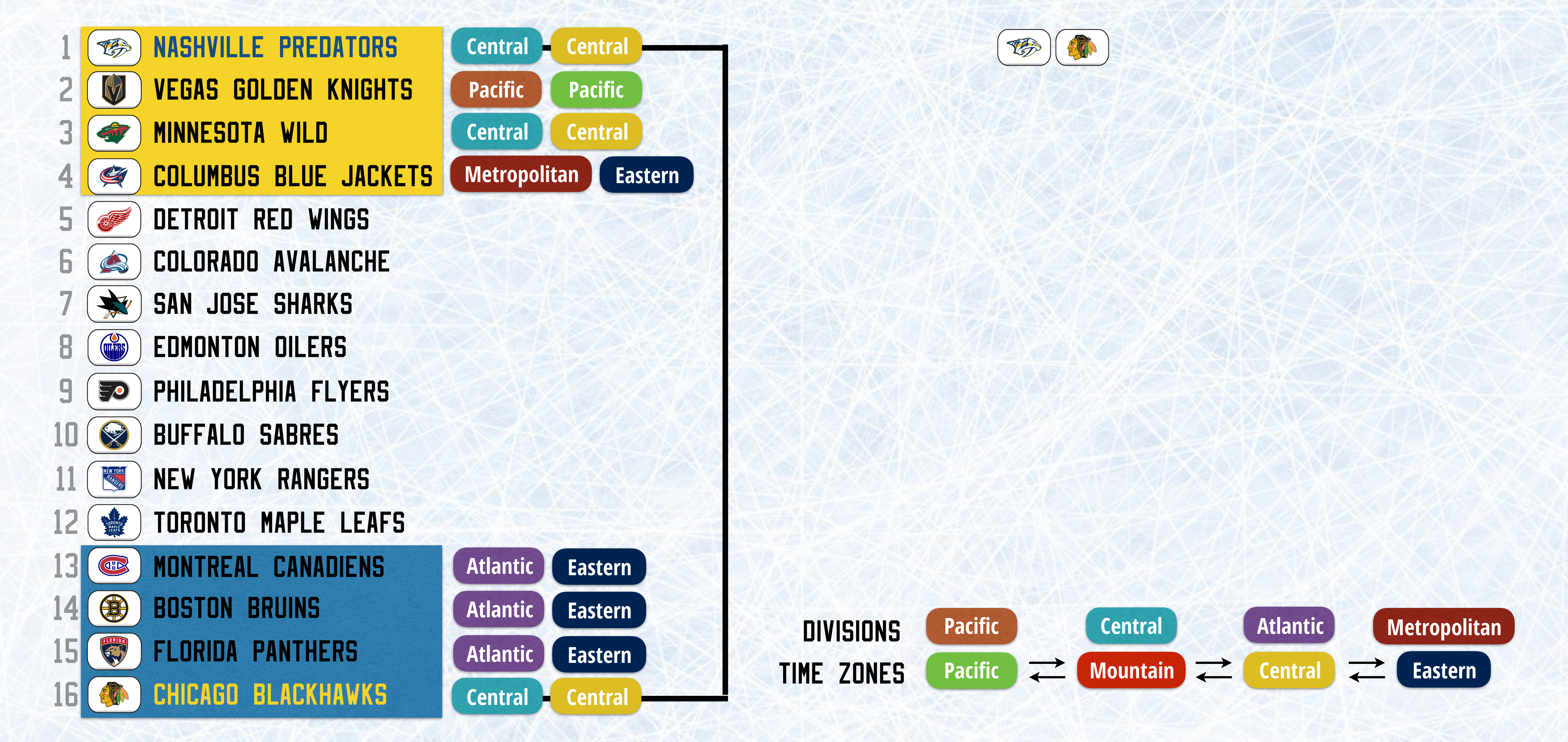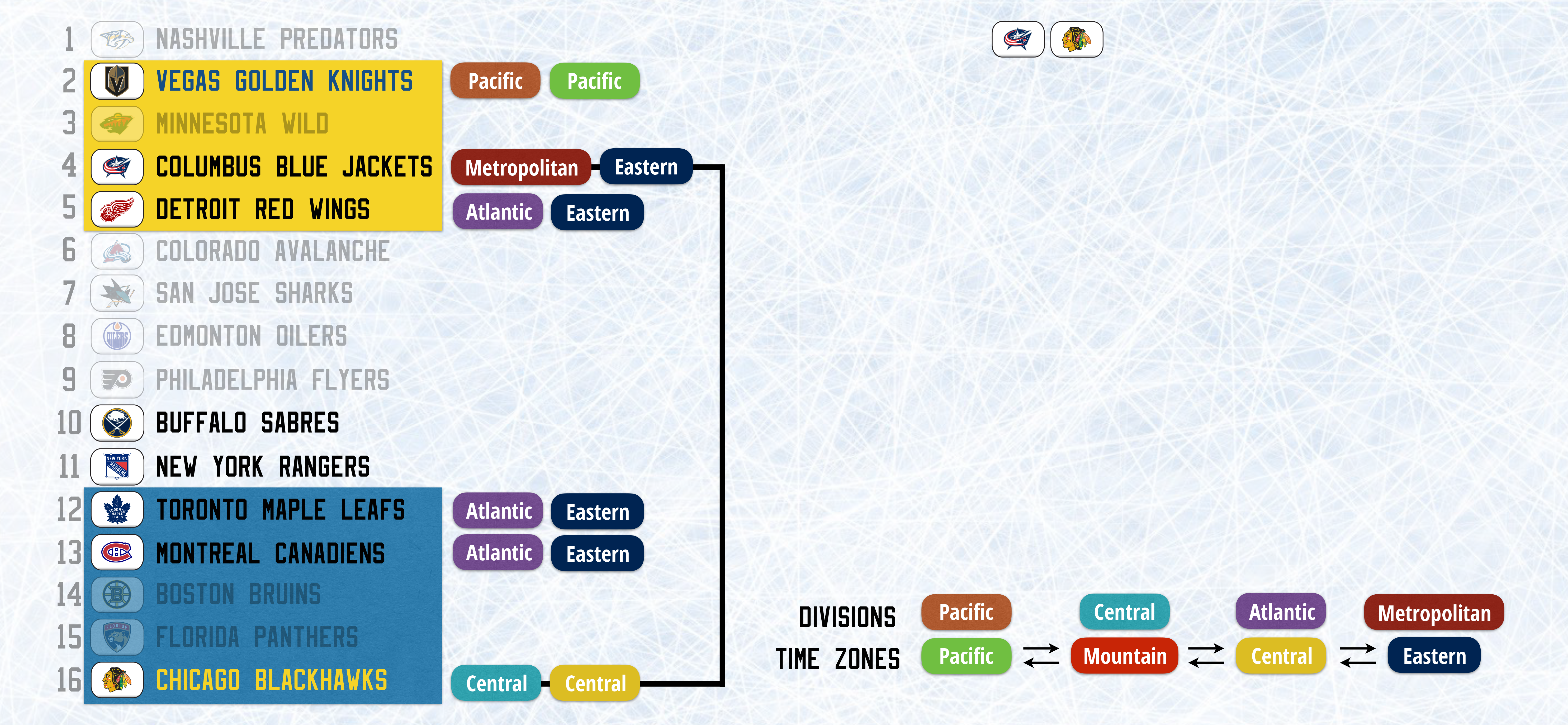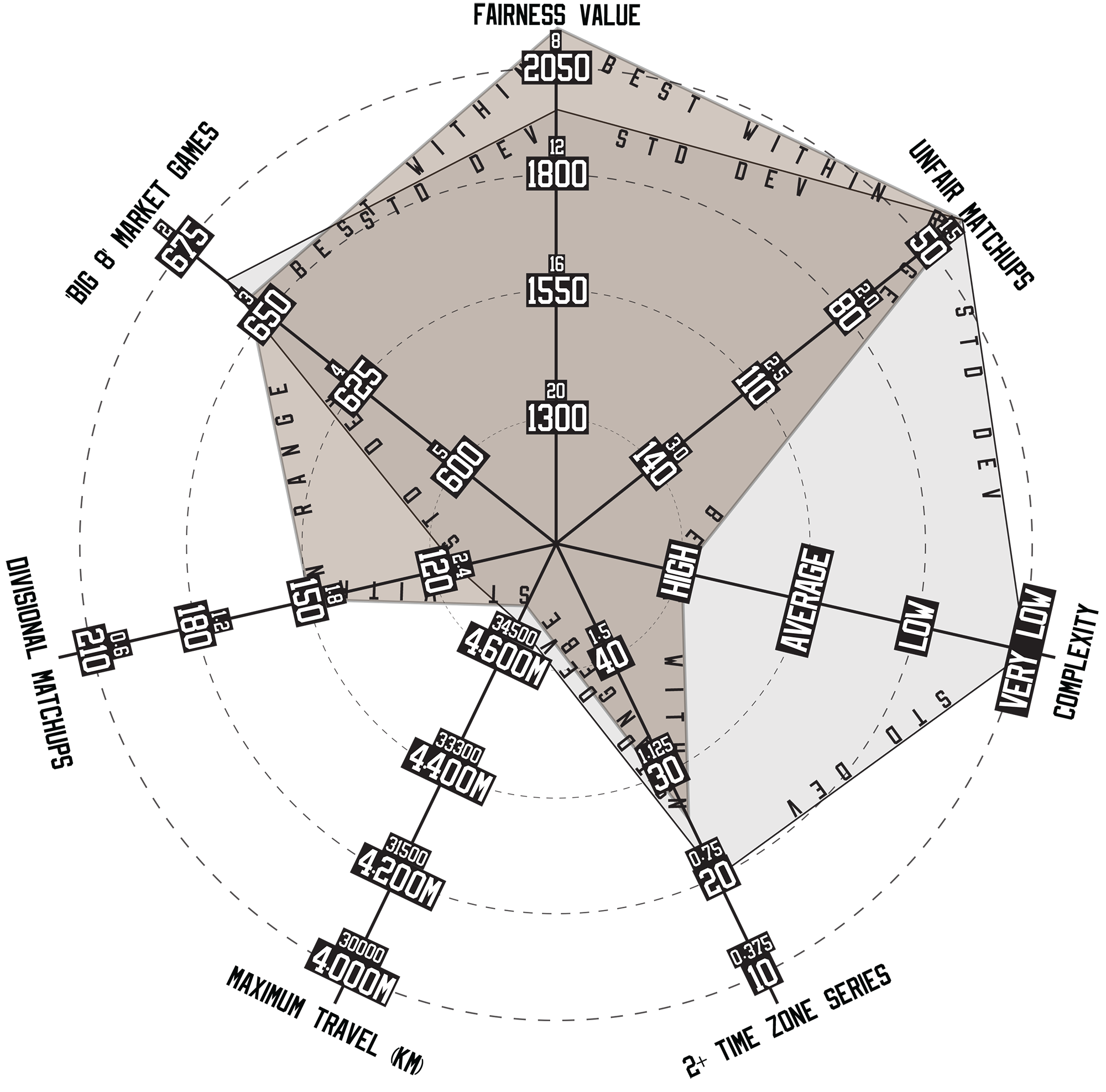Best-Within-Range Format
To prioritize fairness and rivalry building, while keeping limits on time zone travel, I designed this format, which mimics the top-16 format from the early 80s, but with limitations on which teams can play each other. The top 16 teams, regardless of alignment, make the playoffs. Each team, starting from either the #1 seed or the #16 seed, is given an opponent through this method:

- Each team’s “range” is the 4 teams with the worst (for highest remaining seeds) or best (for lowest remaining seeds) records who qualified for the playoffs;
- The first priority for opponent selection is the Division Rival with the best/worst record;
- If there are no Division Rivals in the 4-team range, the next priority is to the opponent in the nearest time zone with the best/worst record;
- To determine which team (highest remaining or lowest remaining) selects an opponent first, priority is given to the matchup with the higher-priority matchup (has a Division Rival in the range, or if not, an opponent in a closer time zone that the team on the other end does) most separation the standings (i.e. #1 vs #15 would be prioritized over #3 vs #16, because the “gap” between the teams in the former matchup is 14 spots in the standings, while it is 13 for the latter).
- If the separation is equal, priority shifts from best remaining, then to worst remaining, then back to best remaining, assuming the gaps are equal for each of these selections. Priority always shifts from top to bottom or bottom to top depending on which seed selected an opponent last.

After each round, the range “resets”: remaining teams in the second round would be ranked 1-8, and the range would reduce to the 3 lowest/highest teams remaining for each highest/lowest remaining team. The same occurs in the 3rd round, but with a range of only 2.
- Significant advantage in matchup fairness, since most unfair matchup possibilities are completely impossible in this format;
- Great variety in the possible matchups, which means that new rivalries can be created, and many markets could get a marquee team as an opponent that would normally not be possible until the later rounds;
- Possibility of Division Rivals meeting later in the playoffs, as shown in Example 3.
- Extremely complex format, due to the number of rules governing playoff matchup determination;
- No regard for differences in schedule strength based on the alignment in order to create league-wide playoff competiton;
- Strength in unfair matchups comes with relative inconsistency, as shown in the coefficient of variation chart above.
All logos © National Hockey League or respective owners, used for purpose of graphic aid only
Ice background © Artsfon wallpapers




